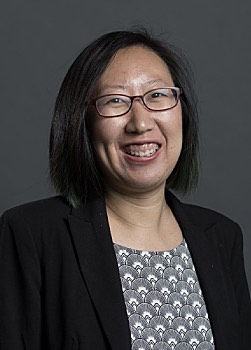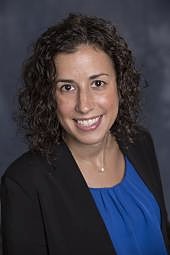Online video blogs, also known as vlogs, can be a useful tool to educate and inform people about specific medical conditions, including lung diseases, and can help both doctors and their patients, according to the author of a new commentary published in the medical journal The Patient — Patient-Centered Outcomes Research.

“It is not always easy for physicians to engage patients in their own care,” said Joy L. Lee, PhD, a health services and outcomes research investigator at the Indiana University School of Medicine research center-affiliated Regenstrief Institute, and co-author of “Seeing is Engaging: Vlogs as a Tool for Patient Engagement,” in a press release.
“Vlogs may be uniquely suited to overcome barriers to patient engagement for individuals with chronic illnesses, especially those under 50 who increasingly reach out to the internet in so many aspects of their lives,” she said. “Given the potential impact of online information, physicians and other clinicians should consider familiarizing themselves with key vloggers who can provide a window into a disease.”
A major advantage of vlogs is that they’re accessible to viewers at any time they want to watch, and they’ve become an increasingly popular platform for conveying knowledge and advice on a wide variety of topics, including healthcare and wellness.
The Indiana University release cites a 2015 Nielsen survey finding that YouTube online video content reaches people ages 18 to 49 in America more than any broadcast or cable network, and that two-thirds of YouTube viewers use mobile devices for viewing.
 Lee’s commentary co-authors include Mary Frey, BA, and Peter Frey, MTh, MDiv, a husband-and-wife team of online video journalists, or vloggers, who note that as with other medical information sources, some vlogs are more reliable than others. The Freys recommend that healthcare providers curate lists of vlogs for accuracy, identifying the ones that could be potentially valuable to patients or healthcare providers.
Lee’s commentary co-authors include Mary Frey, BA, and Peter Frey, MTh, MDiv, a husband-and-wife team of online video journalists, or vloggers, who note that as with other medical information sources, some vlogs are more reliable than others. The Freys recommend that healthcare providers curate lists of vlogs for accuracy, identifying the ones that could be potentially valuable to patients or healthcare providers.
Known together as “The Frey Life on YouTube,” the couple’s central vlogging focus is on the chronic, often debilitating genetic disease cystic fibrosis (CF). The Freys create daily vlogs chronicling their lives and the challenges of living with and managing CF, which Mary was born with, and which requires complex daily care.
“In August 2014, we started documenting our daily life on YouTube through daily vlogs,” Peter Frey, pastor of Union Congregational Church, an evangelical congregational church in South Grafton, Massachussetts, explains on his website.
“What originally started as a way to keep in touch with friends and family while we were in Scotland has turned into an active and growing ministry of sharing our heart and our lives with thousands of people daily across the globe. We aim to show the ups and downs of everyday life with a chronic illness and encourage and inspire others by the faith and hope that gives us strength to laugh everyday.”
Frey says the couple has been amazed by how popular their “goofy and fun” YouTube videos have become. Their daily posts, which first appeared in 2012, typically attract about 15,000 viewers. Their vlogs have included topics such as “Cystic Fibrosis Airport Precautions,” an “Unexpected Trip to Urgent Care,” and “Why Can’t Mary Eat?” In some posts, Mary also answers questions submitted by viewers about living with CF.
The authors of the commentary note that vlogs like Frey Life provide a platform for patients with chronic diseases and their families to interact with others in similar circumstances.
Because individuals living with CF and other chronic diseases often have insufficient time and energy to interact with the healthcare system or with support groups, the authors observed that vlogs such as the Frey Life can serve as an important information and communication resource.
In the commentary, Mary Frey says she views her vlog as a supportive outreach to others struggling with CF, noting, “We want to highlight the fact that [even though] a patient isn’t beating the odds and breaking statistics, they are still special and they are not a lesser patient.”
 “YouTubers like the Freys are becoming influential figures in the lives of many Americans,” said Albert Wu, MD, MPH, of Johns Hopkins Bloomberg School of Public Health and senior author of the study. “Physicians should acknowledge that often [vloggers] do a better job of engaging some patients, especially younger ones, and should be willing to add vlogs to their therapeutic toolkit.”
“YouTubers like the Freys are becoming influential figures in the lives of many Americans,” said Albert Wu, MD, MPH, of Johns Hopkins Bloomberg School of Public Health and senior author of the study. “Physicians should acknowledge that often [vloggers] do a better job of engaging some patients, especially younger ones, and should be willing to add vlogs to their therapeutic toolkit.”
“Physicians should consider vlogs as one more tool that they can provide their patients and help them navigate this important resource,” added Lee, “and patients should consider vlogs as dynamic sources of information that can help them cope with their disease experience and ask better questions of their medical team.”
 The commentary’s fifth co-author is Ilene L. Hollin, PhD, MPH, of the National Pharmaceutical Council and the University of Southern California Schaeffer Center, and a Schaeffer-NPC Postdoctoral Health Policy Fellow.
The commentary’s fifth co-author is Ilene L. Hollin, PhD, MPH, of the National Pharmaceutical Council and the University of Southern California Schaeffer Center, and a Schaeffer-NPC Postdoctoral Health Policy Fellow.

